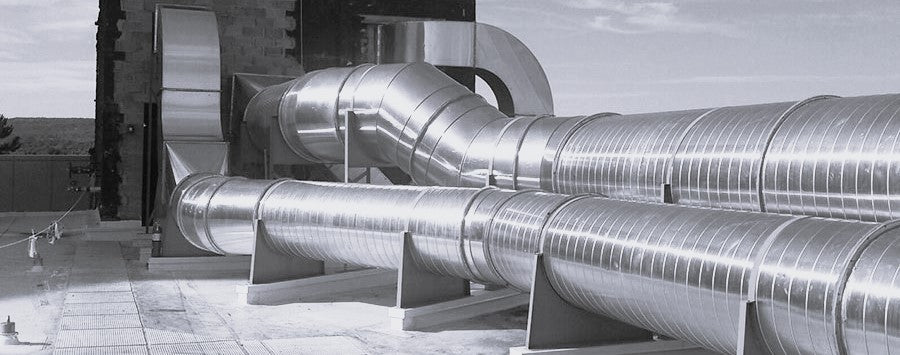Choosing the right hanger can significantly impact the ease, speed, and success of your duct installation.
When installing round industrial ductwork, selecting the right type of hanger is critical. Some hanger systems are more labor-intensive and require more components, while others streamline the process and reduce time on site. Here's a breakdown of the most common options used in industrial settings:
Standard Duct Hangers (C-Clamp, Clamshell, i.e. traditional style)
-
These are the default hangers typically provided by clamp-together duct manufacturers.

-
Labor-intensive: They require the most parts per hanger compared to other types.
-
Can be mounted overhead using beam clamps and threaded rod, but this setup requires twice the labor and hardware compared to Hat hangers.
-
If attaching to strut channels, expect even more labor and additional hardware.
Best for: Installations where default components are acceptable, and labor costs are not a primary concern.
Hat / HJ Duct Hangers (sometimes called Clevis Hangers)
-
Designed to attach duct hangers to overhead beams
or structural steel

-
Uses beam clamps and threaded rod for overhead support.
-
While 3/8" threaded rod is common, we recommend a minimum of ½” diameter for added strength and stability.
-
Ensure the beam clamp is also sized for ½” threaded rod.
-
Provides limited lateral stability, so some side-to-side sway is still possible.
Best for: Standard industrial installs where basic support is acceptable and slight lateral movement is not an issue.
Strut Duct Hangers (uses strut channel)
-
Requires mounting a strut (Unistrut) channel overhead or attached to some structure.

-
Securely clamps the duct to the strut for a tight, rigid hold.
-
Uses the fewest parts of any hanger type.
-
Requires the least amount of labor per attachment point.
-
Allows for duct support in any orientation—horizontal or vertical.
Best for: Projects where efficiency, strength, and stability are top priorities, and reducing installation time is important.
Gripple Hangers
-
Uses a cable-based system suspended from overhead mounting hardware.
-
Requires appropriate hardware to anchor the Gripple cord to the structure.

-
Provides minimal overhead and lateral support, allowing for duct sway.
-
Available in various cable thicknesses depending on duct size and weight requirements.
Best for: Lightweight duct installations or areas where minimal visual or structural impact is desired.
Final Thoughts
Choosing the correct hanger type isn’t just about compatibility—it impacts installation time, labor cost, and long-term performance. For the fastest and most secure installs, strut duct hangersconsistently offer the greatest value. However, your environment, budget, and support requirements should all factor into your decision.
Need help selecting the best option? Contact us! We’re here to help you build smarter and faster.

